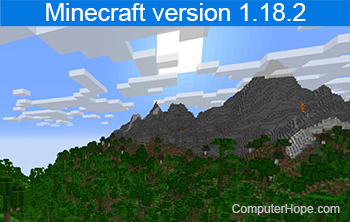Procedural generation

In general, procedural generation refers to a computer algorithm that automatically create content based on pre-written instructions. This concept is frequently used in video games to create worlds on a large, theoretically infinite scale. An example of this is Minecraft, which generates all of its worlds procedurally. Following several rules for terrain generation, Minecraft generates its block-based world in 16-by-16 block chunks. When a player enters a new chunk for the first time, the chunks around them are generated, forming mountains, trees, caves, and other landscape features.
Another notable example of procedural generation is in No Man's Sky. This game, set in a procedurally-generated space environment, creates new planets that players can explore using a rocket. Each planet has its own environment, climate, and unique species of plant and animal life. When a player discovers a new life form, they can name it.
Procedural generation, of course, has its limits. To give the game a consistent look and feel, textures, 3-D models, and other assets must be recycled. Both Minecraft and No Man's Sky do this with "biomes" that follow similar rules and use similar textures. Mobile games like Subway Surfers and Temple Run use simpler versions of procedural generation to allow players to run for an infinite time without repeating the same actions.
